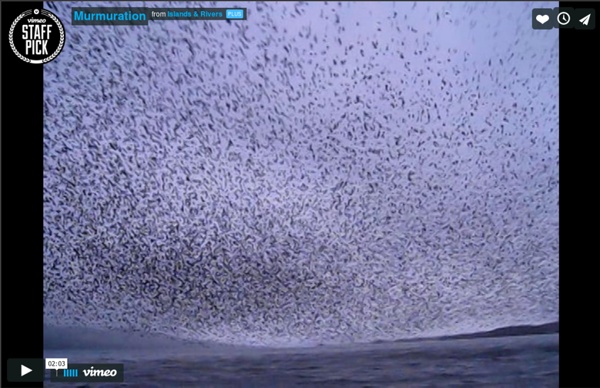



Building For Birds: Architects Aim For Safer Skies Hide caption This assortment of more than 1,500 dead birds, all killed by collisions with Toronto windows, was collected during the 2010 migration season by volunteers from the Canadian Fatal Light Awareness Program. Kenneth Herdy/FLAP Hide caption Visitors take in the views from the High Line, a Manhattan park developed on an old elevated railway line. City parks attract birds to the city, but glass-fronted buildings pose a danger. John W. Poole/NPR Ennead Architects Hide caption A house sparrow eyes a visitor from the foliage of Manhattan's High Line park.
Young Pelicans In Trouble This Year - Gazettes.com: Environment Bird rescuers are reporting higher than usual numbers of baby pelicans dying or in distress this summer. Julie Skoglund, manager at International Bird Rescue’s Los Angeles Center in San Pedro, said record numbers of young, starving California Brown Pelicans are being reported by concerned beachgoers and threatening to overwhelm rescue centers up and down the coast. International Bird Rescue is asking the public to be on the lookout for birds in distress; also, the organization is asking for volunteers and accepting donations to help pay for the cost of treating the birds. Pelicans consume half their own bodyweight in seafood each day — typically four to five pounds of fish costing up to $2.05 per pound. With rehabilitation periods of several weeks to a month or more, the expenses — not including medicines and surgeries — multiply quickly, according to Skoglund. “Our average really fluctuates every year, but 174 in less than two months is very unusual,” she explained.
A Clear And Present Danger: How Glass Kills Birds Hide caption Experts say glass buildings kill millions of birds every year; scientists at Powdermill Avian Research Center are studying ways to help prevent this. Here, a volunteer tags a hooded warbler in Rector, Penn., in May. Maggie Starbard/NPR Hide caption Luke DeGroote, the banding program coordinator, looks for birds trapped in fine-meshed mist nets. Nearly 70 nets cover a 24.7-acre area at Powdermill; they need to be checked every 30 to 40 minutes. Bicknell's Thrush habitat preserved in Dominican Republic By Nate Swick, on June 16, 2012 From an article in the Philadelphia Inquirer, via DC Birding Blog That most cryptic of North American thrushes, the Bicknell’s Thrush, is known to be exceptionally range restricted in its breeding range. It nests only in a few sites in the northeastern US and eastern Canada, generally over 3,000 feet in elevation and generally associated with red spruce stands. What is perhaps less known is that the species is equally range restricted on its wintering grounds, with 90% of the population of Bicknell’s Thrushes wintering on the island of Hispaniola, which consists of the two nations of Haiti and the Domincan Republic.
BBC Nature - Bird sings song with heavy wings 16 June 2012Last updated at 01:02 By Alejandra Martins Reporter, BBC Nature The male club-winged manakin performs its mating call The only bird known to sing with its wings contains some secrets of its performance in its bones, researchers have found. The club-winged manakin, which lives in the cloud forests of Colombia and Ecuador, performs a mate-attracting song by rubbing its wings together. A Cornell University team from the US scanned its bones. Albino hummingbird Description: all white w/ pink beak and eyes.. 1 species ID suggestions Map DataMap data ©2014 Google Imagery ©2014 TerraMetrics Map Data Political row flares over 'brutal slaughter' of three million birds a year in Cyprus - Europe - World Their main target is the blackcap, a dainty warbler known as the northern nightingale for its sweet fluting song. Now these pretty little creatures have flown into another messy situation: a political row over who's to blame for their slaughter, involving the British military, Cypriot villagers and a furious MEP. Struan Stevenson, a Scottish Tory member of the European Parliament, has told Europe to “stop blaming Britain” for the “cruel practice,” after the Environment Commissioner accused the Ministry of Defence of not doing enough to stop poachers on its bases on the Mediterranean island. Together with Robins, Blackcaps are trapped to supply taverna restaurants with meat for the local delicacy, ambelopoulia, through black-market trading - despite the practice being illegal since 1974. “Instead of taking firm action, they turn a blind eye to the real problem and spinelessly attempt to place the blame with our military,” he said of the “brutal slaughter”.
Watch: Hummingbird 'snores' in its sleep Hummingbirds are known for living fast, flitting around between flowers as their wings flap up to 200 times per second. But they still have to sleep, as this video shows: The clip above was posted to YouTube in December, but suddenly went viral in recent days thanks to Reddit. It stars a female amethyst-throated sunangel, native to the Andes, and was filmed at a research facility in Peru. According to uploader forrestertr7, the bird is in a machine that tests oxygen intake. Brightly colored bird bills indicate good health The colour of a female bird's bill has an important biological purpose, according to new Queen's research. Troy Murphy has found female bill colour reflects the health of the bird. Females with more colourful bills have higher antibody levels, indicating greater strength and the ability to fight off invaders. "This is so exciting because it means a bird facing a rival with a colourful bill will be able to assess the rival's health and thus assess whether the rival will have lots of energy to invest in a fight," says Dr. Murphy, who conducted his research at the Queen's University Biological Station.